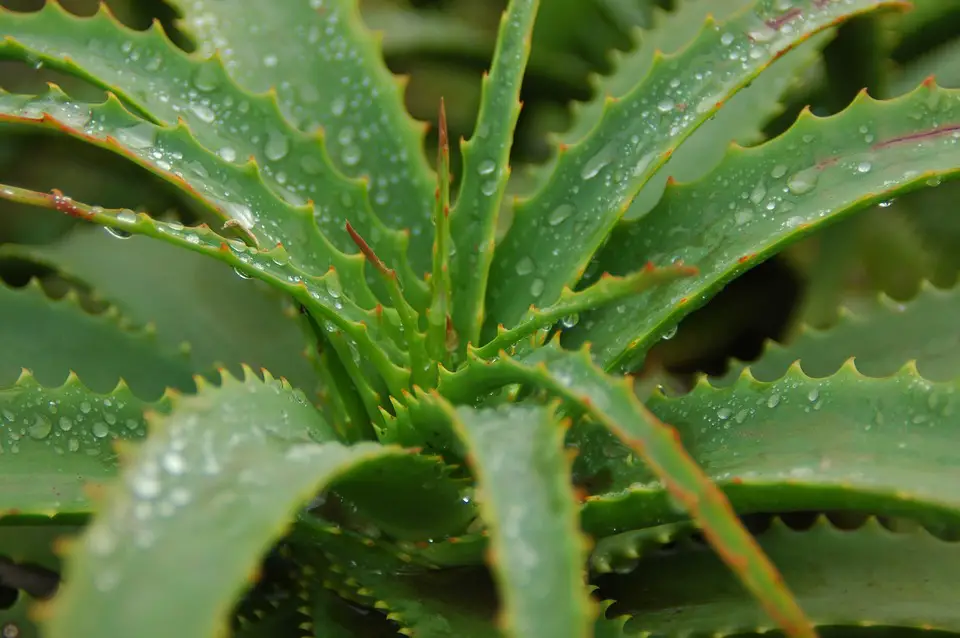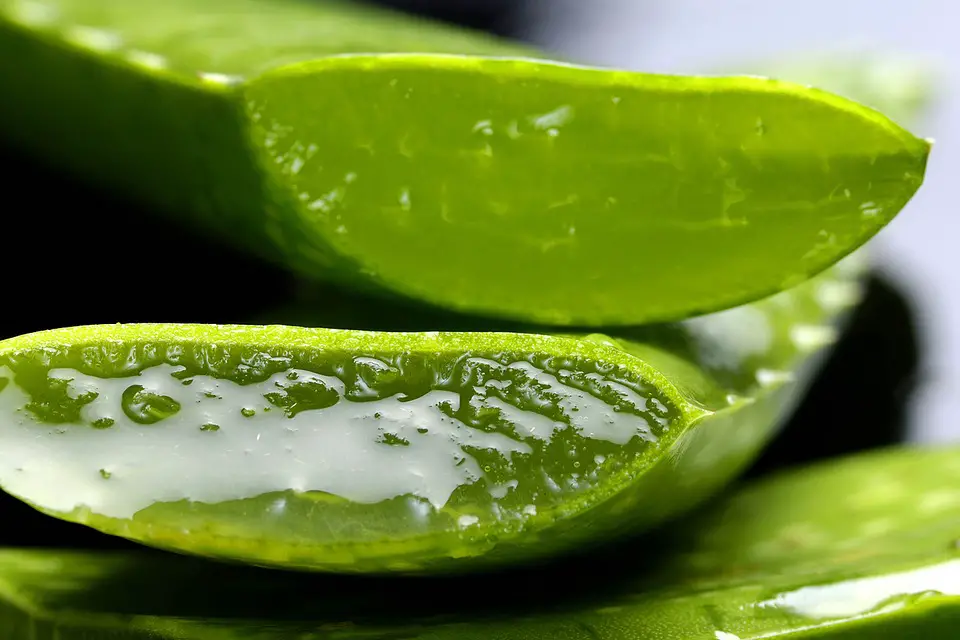We use affiliate links to run our site. When you buy through links on our site, we may earn an affiliate commission, without any added cost to you. Learn more
Have you ever gazed upon your aloe vera plant, only to notice its leaves looking disappointingly thin? If so, you’re not alone. Thin aloe leaves can be a cause for concern among plant enthusiasts, as they not only affect the plant’s aesthetic appeal but also indicate potential health issues.
Aloe vera plants are renowned for their numerous benefits, from soothing sunburns to improving indoor air quality. However, to fully harness the power of this remarkable plant, it is crucial to understand the significance of healthy aloe leaves.
In this comprehensive article, we will delve into the world of thin aloe leaves, exploring their causes and providing practical solutions to restore vitality and thickness.
Whether you’re a seasoned plant parent or a beginner in the realm of aloe vera care, this guide will equip you with the knowledge to ensure your aloe plants flourish.
So, let’s embark on this journey together as we unravel the mysteries behind thin aloe leaves, empowering you to nurture your plants back to their vibrant glory.
Understanding Aloe Vera
Aloe vera, a succulent plant native to the arid regions of Africa, has captivated humanity for centuries with its remarkable healing properties. Its long, fleshy leaves store a gel-like substance that contains a wealth of nutrients and therapeutic compounds.
Aloe vera is characterized by its rosette of thick, spiky leaves that grow in an upright manner. These leaves play a vital role in the overall vitality and growth of the plant. They act as storage units, housing essential nutrients, water, and carbohydrates that sustain the aloe plant during periods of drought or unfavorable conditions.
When it comes to healthy aloe leaves, they exhibit certain distinct characteristics. They are thick and plump, indicating an abundance of moisture and nutrients within.
The color of healthy aloe leaves ranges from vibrant green to a slight bluish tint, depending on the species. Additionally, the texture is smooth and firm, reflecting the optimal health of the plant.
The star component of aloe vera is its gel, which is derived from the inner portion of the leaves. This gel is rich in vitamins, minerals, amino acids, and antioxidants, making it a treasure trove of natural goodness. The gel is renowned for its soothing and healing properties, offering relief from sunburns, skin irritations, and minor wounds.
To fully harness the benefits of aloe vera gel, it is essential to maintain healthy leaves. Thick, vibrant leaves ensure the production of high-quality gel, packed with the potent compounds that contribute to its therapeutic effects.
Understanding the importance of healthy aloe leaves sets the foundation for addressing the issue of thin leaves. In the following sections, we will explore the various causes behind thin aloe leaves and provide effective solutions to restore their thickness and vitality.
Common Causes of Thin Aloe Leaves
Thin aloe leaves can be attributed to various factors that impact the overall health and vigor of the plant. Understanding these causes is crucial for effectively addressing the issue and promoting thicker and healthier leaves.
Here are the primary factors that contribute to thinning of aloe leaves:
1. Insufficient Sunlight Exposure
Aloe vera plants thrive in bright, indirect sunlight. When they do not receive adequate light, their leaves can become thin and elongated.
It is important to provide aloe plants with at least six hours of sunlight daily to ensure proper photosynthesis and leaf development. Insufficient light can result in weak, leggy growth and ultimately lead to thin aloe leaves.
2. Improper Watering Practices
Watering plays a critical role in aloe vera care. Overwatering or underwatering can have adverse effects on leaf thickness.
Overwatering can lead to root rot and hinder the plant’s ability to absorb nutrients, resulting in thin leaves. Conversely, underwatering can cause the leaves to shrink and become thin as the plant conserves water.
Striking the right balance by allowing the soil to dry out between waterings is crucial for maintaining healthy leaf development.
3. Nutrient Deficiencies
Aloe vera plants require specific nutrients to thrive and produce robust leaves. Nutrient deficiencies, particularly in essential elements such as nitrogen, phosphorus, and potassium, can contribute to thinning leaves.
Signs of nutrient deficiencies may include yellowing of the leaves, stunted growth, and overall weakness.
Providing a balanced fertilizer regimen tailored to the needs of aloe vera plants can help prevent nutrient deficiencies and promote healthy leaf growth.
4. Pests and Diseases
Aloe vera plants are not immune to pests and diseases that can weaken the leaves and hinder their growth. Common pests like mealybugs, aphids, and scale insects can sap the vitality of the plant, leading to thinning leaves.
Additionally, fungal infections and bacterial diseases can cause leaf discoloration, deformities, and overall thinning. Implementing proper pest control measures and maintaining good hygiene practices can help prevent these issues and ensure healthier leaves.
5. Environmental Factors
Environmental conditions also play a significant role in aloe leaf thickness. Extreme temperatures, high humidity, and poor air circulation can adversely affect aloe vera plants, leading to thinner leaves.
Very low or high temperatures can cause stress and hinder the plant’s ability to maintain optimal leaf thickness. Similarly, inadequate air circulation can impede transpiration and nutrient uptake, resulting in thinner leaves.
6. Aging and Natural Growth
As aloe vera plants age, their older leaves naturally become thinner and less vibrant. This is a natural part of the plant’s growth cycle. The plant allocates more resources to younger leaves, while older leaves gradually wither and thin out.
It is important to distinguish between natural leaf aging and thinning caused by other factors mentioned above. Pruning and removing older leaves can help redirect the plant’s energy towards new leaf growth and maintain an overall healthy appearance.
In the following sections, we will explore practical solutions to restore healthy leaf thickness and promote the overall well-being of your aloe vera plants.
7. An unsuitable container, such as a tall and narrow pot
The container you choose for your aloe plant plays a significant role in its overall health and leaf thickness. An unsuitable container, such as a tall and narrow pot, can hinder the development of thicker leaves.
Aloe vera plants have a shallow root system, and they prefer wider containers that allow their roots to spread out. Tall and narrow pots restrict the lateral growth of the roots and can lead to crowded conditions. As a result, the plant may struggle to uptake sufficient water and nutrients, which can impact the thickness of the leaves.
Solutions to Restore Healthy Aloe Leaves

Restoring healthy aloe leaves is not an impossible task. By addressing the underlying causes of thinning leaves, you can revitalize your aloe vera plant and promote robust leaf growth.
Let’s explore actionable steps and strategies based on the identified causes:
1. Optimize sunlight exposure for your aloe plants:
Sunlight management is crucial for promoting thicker aloe leaves. Place your aloe plant in a location where it can receive bright, indirect sunlight for at least six hours a day.
South or west-facing windows are often ideal. If you don’t have access to sufficient natural light, consider using artificial grow lights, such as fluorescent or LED lamps.
Position the lights about 6-12 inches above the plant and provide them with 12-16 hours of light per day.
2. Adjust the amount of water:
Proper watering techniques are vital for healthy leaf development. Allow the soil to dry out partially between waterings.
A good rule of thumb is to water your aloe when the top inch of soil feels dry.
When watering, ensure thorough saturation, allowing water to flow through the drainage holes.
Remember, overwatering can lead to thin leaves, so avoid excessive moisture retention. Additionally, use well-draining soil to prevent waterlogged conditions.
3. Choose A correct Container for your Aloe:
To promote thicker aloe leaves, opt for a container that is wider rather than deeper. Choose a pot with adequate drainage holes to prevent waterlogging, which can also contribute to thin leaves. This will provide ample space for the roots to expand and absorb nutrients more efficiently.
Additionally, consider repotting your aloe plant if it has outgrown its current container. When repotting, choose a pot that is about 2 inches larger in diameter than the previous one. This will allow the plant to continue its healthy growth and support the development of thicker and more robust leaves.
4. Apply Fertilizers:
Nutrient optimization is essential for healthy leaf growth in Aloe plants. Consider using a balanced, water-soluble fertilizer formulated for succulent plants.
Apply the fertilizer at half the recommended strength, once a month during the active growing season (spring and summer). Organic supplements like compost or diluted liquid seaweed can also provide essential nutrients.
Monitor the plant’s response and adjust the feeding regimen accordingly, avoiding excessive fertilization, which can lead to nutrient imbalances.
5. Prevent and treat pests and diseases that may cause thinning leaves:
Inspect your plant regularly for common pests like mealybugs or aphids. If you spot any, isolate the affected plant and treat it with organic insecticidal soap or neem oil.
For fungal or bacterial diseases, remove the infected leaves promptly. Maintaining good plant hygiene, such as removing fallen leaves and debris, can help prevent infestations and diseases.
6. Make some Environmental adjustments:
Ensure moderate temperatures between 60-80°F (15-27°C), avoiding extreme heat or cold. Provide adequate air circulation by placing a small fan near the plant or opening windows occasionally.
Avoid exposing the plant to drafts or sudden temperature fluctuations. Maintain moderate humidity levels around 40-50% to prevent excessive moisture loss from the leaves.
7. Use Pruning Properly:
When pruning, remove older, withered leaves to redirect the plant’s energy towards new growth. Use clean, sharp pruning shears and make cuts close to the base of the plant.
Also, avoid excessive handling or touching of the leaves, as this can cause damage. Provide adequate ventilation, avoid overcrowding with other plants, and maintain cleanliness to prevent pest infestations.
Conclusion:
As we conclude this journey, we hope you now have a deeper understanding of the causes and solutions for this common issue. By addressing factors such as sunlight exposure, watering practices, nutrient optimization, pest control, environmental adjustments, and container suitability, you can restore healthy aloe leaves and witness the vibrant beauty of your plants.
Please remember, the key to success lies in taking action. Implement the strategies we’ve discussed based on your specific circumstances and observe how your aloe plants respond.
Patience is essential, as it may take time for noticeable improvements to occur. However, with consistent care and attention, you can rejuvenate your aloe vera plants and enjoy the rewards of thicker and healthier leaves.
If you found this article helpful, we encourage you to share it with fellow plant enthusiasts who may also benefit from this knowledge. Explore more articles on our site to expand your understanding of plant care and discover additional insights into nurturing various species.
Amazon and the Amazon logo are trademarks of Amazon.com, Inc, or its affiliates.

Hi there! My name is Prasenjit and I’m an avid gardener and someone who has grown a passion for growing plants. From my hands-on experience, I have learned what works and what doesn’t. Here I share everything I have learned.
